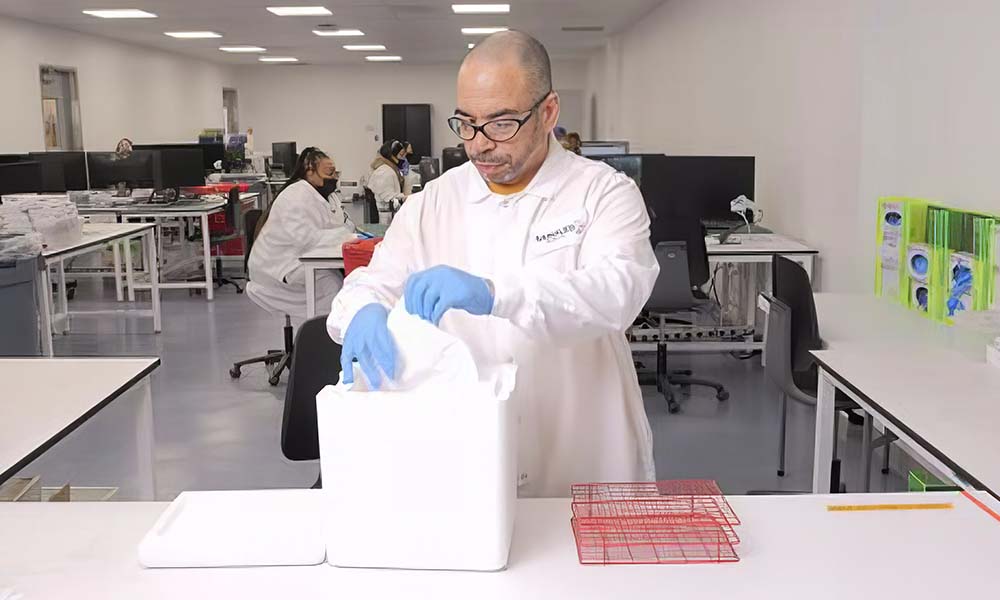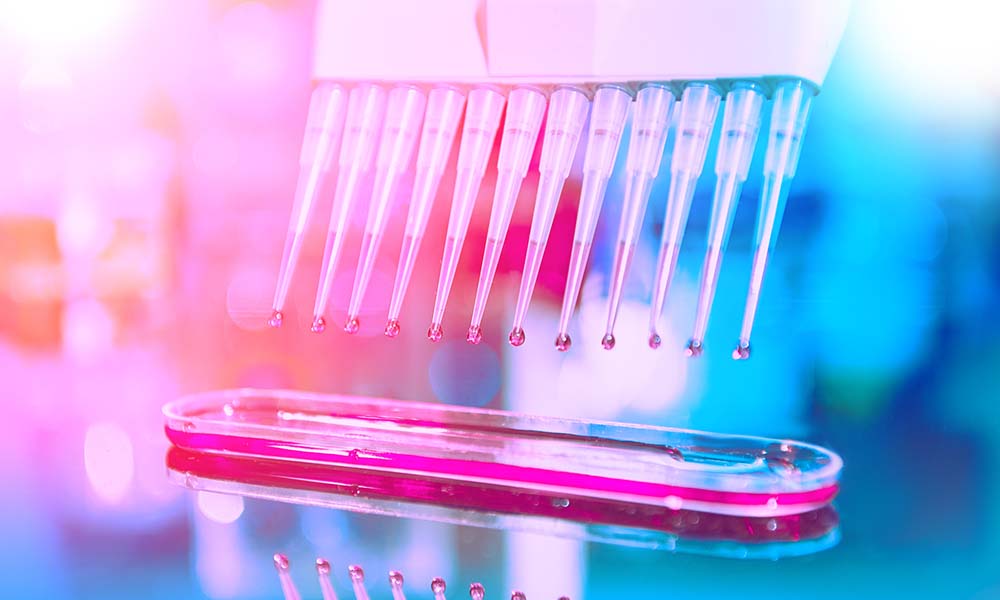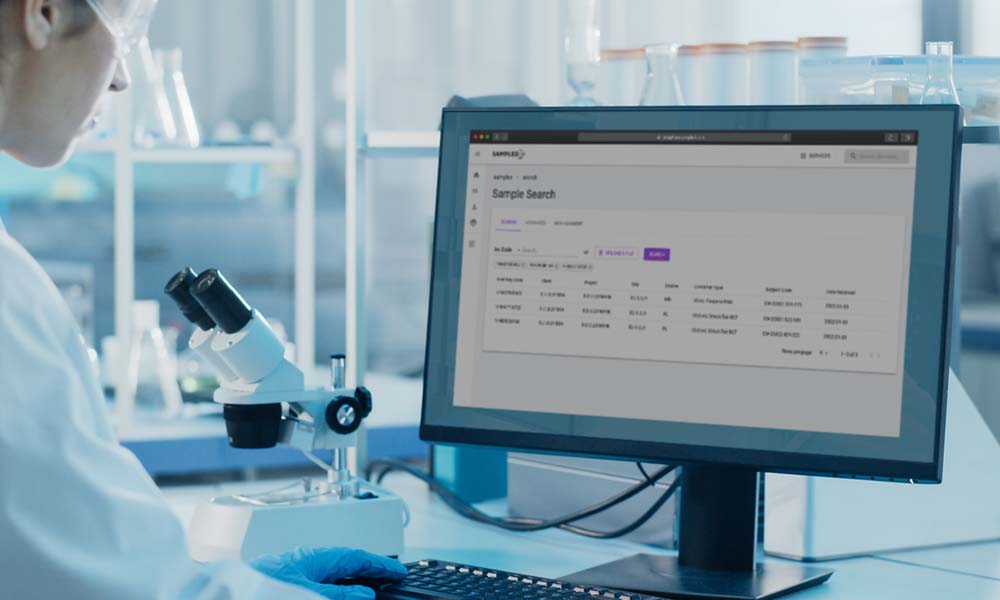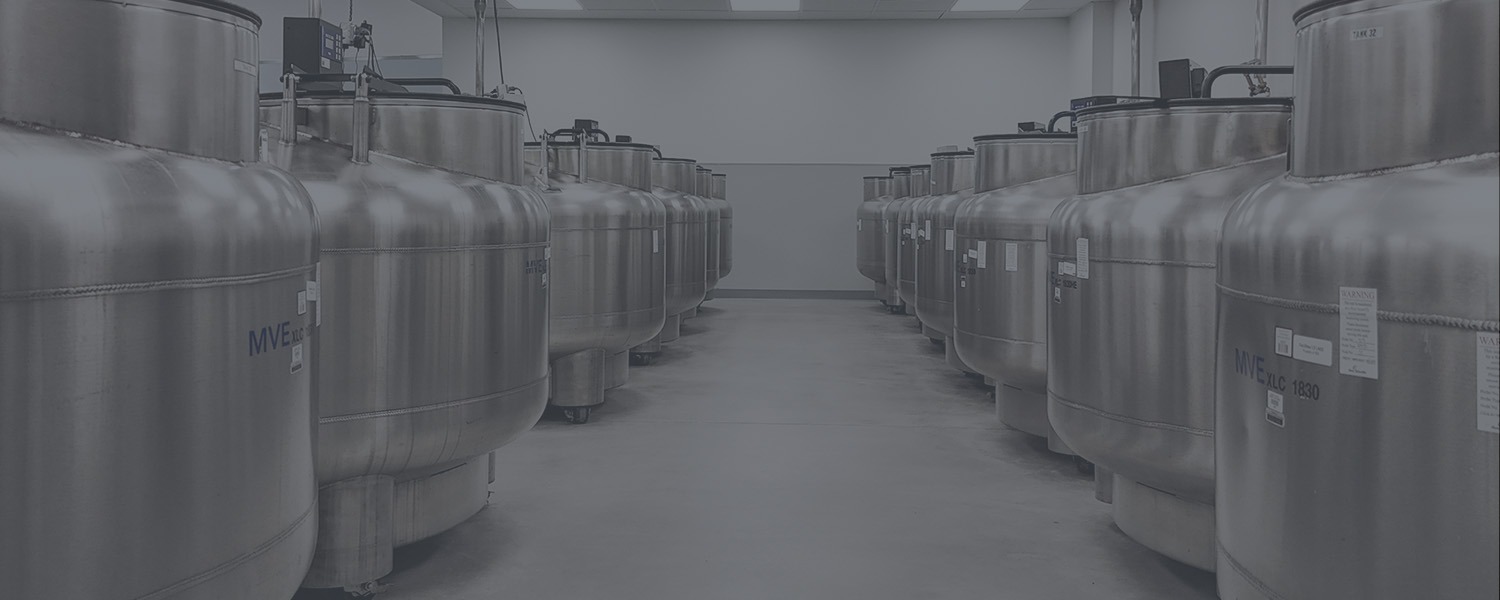Sanger Sequencing
Sampled’s team of experts uses the Sanger sequencing method to detect small variants in DNA. Our platform marries high capacity with expert analysis to ensure our clients get accurate results fast.
What is Sanger Sequencing?
Sanger sequencing is a method of DNA sequencing that is based on amplicon size and the random incorporation of modified nucleotides during polymerase chain reaction (PCR).
The technology was developed in the 1970s by Frederic Sanger and his team before being commercialized by Applied Biosystems. Within Sampled’s analytics pipeline, Sanger sequencing is the standard technique used to confirm single nucleotide changes and small insertions and deletions identified in next-generation sequencing (NGS) experiments. We typically detect insertions and deletions between 5 and 25 base pairs in length but variants of up to 50 base pairs are also viable for analysis. Sanger sequencing can also be used for custom analyses such as the genotyping of individualized genomic loci of our client’s choice.
Sampled’s team of experts uses the Applied Biosystems 3730 XL and SeqStudio, which provide our clients with accurate, high-capacity analysis. We use clinically optimized reagents in our streamlined platforms to ensure the efficient processing of your samples. Once the sequencing is complete, the results are analyzed and verified by in-house expert reviewers to ensure you are getting accurate information on your sample. We provide turnaround times that meet our client’s requirements.
Why Use Sampled’s Sanger Sequencing Services?
Expertise
Here at Sampled, Sanger sequencing is performed by seasoned experts who have vast experience in the methodology and troubleshooting associated with this complex analytical technique. We have a success rate of over 95% on average, so by trusting Sampled’s expert team you are guaranteed to obtain results you can rely on. Our experts are always ready to answer any questions or address any concerns our clients may have.
Automated and High-Capacity
Sampled’s clinically validated Sanger sequencing platforms utilize the Applied Biosystems sequencing platforms, which provide higher capacity for Sanger sequencing analysis. This greatly speeds up turnaround time and minimizes the handling of your samples ensuring that you get the best possible results. At Sampled, Sanger sequencing as a standalone service is a one-day workflow that helps us meet our client’s timelines.
Robust Quality Control (QC)
As part of our analytical pipeline, all samples used for Sanger sequencing are subjected to a robust and continuous QC process. The highest QC standards are maintained whether the client sends us pre-extracted DNA or we extract DNA from samples like whole blood and saliva. QC is essential to ensuring accurate downstream results, which is why Sampled makes QC a top priority.
Streamlined Service
Our Sanger sequencing platform sits within our analytics pipeline, providing several benefits. Sampled’s Sanger sequencing team works closely with the NGS and sample management teams, ensuring accurate and efficient communication and smooth troubleshooting. DNA is vulnerable to freeze-thaw cycles, and by trusting Sampled with your Sanger sequencing needs, you can be sure that your sample is kept at appropriate temperatures at all times throughout the analytical pipeline. We offer our clients robust shipping kitting services to ensure your samples arrive safely and on time.
Sanger Sequencing Applications
Our Sanger sequencing service is essential to our multiomics analytical pipeline. Thus, we work with academic, industry, and clinical laboratories, and the potential applications are vast.
- Disease identification
- Diagnostics
- Drug discovery
- Pharmacogenomics
- Clinical trials
- Research studies
- Biomarker discovery
- Population health studies
- Novel genome assembly
- Agrigenomics
- Disease modeling
- Development modeling
- Drug testing
How Does Sanger Sequencing Work?
Sample Receipt and Processing
Our client’s samples are received by our acquisitions team who enter the information into our laboratory information management system (LIMS) from an electronic manifest. Each sample’s identity and integrity are verified by our sample management team. The sample is then delivered to our analytical pipeline for processing. After a round of QC, pre-extracted DNA can be sent directly to our Sanger sequencing team or DNA can be extracted from raw samples like whole blood and saliva before further processing.

Sample Normalization and PCR
After passing QC, DNA is normalized to the appropriate concentration and volume for our Sanger sequencing platform. Next, a round of PCR is performed to amplify the region of interest. This entails the preparation of a master mix with primers and a separate reaction for each sample. The reaction takes 45 minutes to 1 hour depending on reaction conditions such as amplicon length.

Sequencing
The product of the PCR reaction is used for a Cycle Sequencing reaction containing fluorescently labeled ddNTPs which are modified DNA bases that terminate the elongation of an amplicon when incorporated by the polymerase enzyme. This reaction typically takes 45 minutes, after which the sequencing products are loaded into the sequencing machine (either the Applied Biosystems 3730 XL or the SeqStudio) which separates amplicons by size and provides information on the terminating fluorescent ddNTP based on the color of the fluorescent signal. Sequencing analysis software is employed to analyze each base pair and determine base pair quality.

Sequencing and Variant Analysis
Sampled’s team of experts utilizes Mutation Surveyor software to observe DNA variants. At least two reviewers double-check the result before issuing the final report. This ensures accuracy in reporting, which means our clients can trust the results coming from our Sanger sequencing team.

Reporting and Case Management
After analysis, we communicate the results with our client. Our team of experts is always available to offer guidance on the particulars of our clients’ projects.

What Are the Input Requirements for Sanger Sequencing?
| Item | Type |
|---|---|
| Samples Type | High-quality DNA sourced from, blood, saliva, tissue biopsies, urine, cell line samples/pellets, buccal swabs, buffy coat, and dry blood spots (some sample types for research use only) We also work with pre-extracted DNA For other sample types please contact our sales team |
| Storage/Transport Conditions | DNA should be stored/transported at 4°C or -20°C. Avoiding multiple freeze-thaw cycles For specific information on tissue types please contact a member of our team |
| Input Requirements | Minimum 100 ng DNA (1 μg preferred) per sample |
| Workflow Times | 1-2 days |
Find out more about our Sanger sequencing services
Looking to confirm the interesting results from a next-generation sequencing experiment? Get in touch with one of Sampled’s experts today to discover how our Sanger sequencing platform can give you results you can trust.

